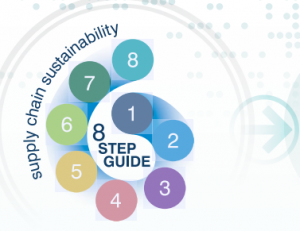As Australian manufacturing industries continue to struggle with the uncertainties of their future in the country, industry associations are backing up businesses by providing useful tools that would help them take advantage of opportunities that would enable them to be more productive and efficient.

One such tool is the one developed by the Plastics and Chemicals Industries Association (PACIA), which helps the industry identify and maximize business opportunities through their supply chains.
PACIA’s 8-Step Guide to Supply Chain Sustainability is an interactive online tool designed to help companies “create business value and reduce costs by collaborating on specific projects with suppliers, service providers and customers.”
According to PACIA Chief Executive Margaret Donnan, the guide encourages innovation and resource efficiency, and positions member companies to meet customers’ evolving demands.
“It is a significant and forward-looking document because it recognises that the strength of inextricably linked supply chains is crucial to the strength of Australian manufacturing – and all this at a time when manufacturing is under severe pressure from the high Australian dollar, high labour costs and increasing energy prices,” Ms. Donnan said in a media release.
The steps of the action plan in a nutshell are:
1. Establish drivers and goals
Thinking about the specific outcomes that you hope to achieve in the supply chain project
2. Define the project
Selecting the supply chain for the product and developing a project plan that will boost the success of the project
3. Engage partners
Creating buy-in with selected supply chain partners and agreeing on common goals and overall strategy
4. Develop the baseline
Collaboratively mapping out the project supply chain and collecting relevant baseline data
5. Identify opportunities
Identifying opportunities and coming up with ideas for improvement and innovation in the supply chain while addressing barriers
6. Take action
Agreeing on an action plan and successfully implementing the actions
7. Measure and communicate
Measuring the outcomes achieved and recognizing the business benefits
8. Close out and integrate
Concluding the project and integrating the insights into the business strategy and systems
Download PACIA’s 8-Step Guide to Supply Chain Sustainability here
Supply chain partners Qenos and Toll have used the guide to work on improving their business by reducing health and safety risks. A video on the case study is featured on www.supplychainsustainability.org.au/.
“PACIA’s 8 Step Guide to Supply Chain Sustainability shows how your organisation can build strong partnerships along your supply chain – with your suppliers, customers and service providers,” according to the guide’s official website.
“These partnerships go well beyond traditional procurement-based relationships, and can help to, improve resource efficiency, reduce business risk, create market advantage, encourage innovation.”














